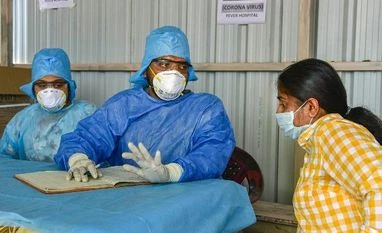It may take some time before epidemiologists and clinicians fully understand Covid-19. Initial evidence suggests that an individual’s fundamental health parameters may be critical in determining the final impact of the disease. Those who are healthy have a much higher probability of experiencing mild illness and full recovery without hospitalisation. Those who have underlying health conditions are more likely to be severely ill. In India, the vulnerability is two-fold. At one end of the spectrum, there are the many who are malnourished and under-nourished in the low-income groups. At the other end, in the middle- and high-income groups, there’s the growing burden of lifestyle disease, such as diabetes, hypertension and coronary diseases.
The consequences of an outbreak of Covid-19 in India will spread beyond those who get sick. If restrictions need to be imposed on the movement of people, on the functioning of offices, the working of factories/call centres, there will be a quantum impact on growth. That would be a body blow to an economy that is growing at a sub-5 per cent level. There is hardly any room for a stimulus. The government’s fiscal deficit is already beyond its target. The states have no spare financial resources. On the monetary side, there is probably greater room, but given the perilous state of the banking system and the lack of monetary transmission, rate cuts by the RBI may not have an impact. India’s short-term policy options are very limited compared to China or the US. The economy may yet rue the lack of deep structural reforms which would have made the fundamentals much stronger and enabled a quick comeback from any black swan event-induced downturn.
But it isn’t all gloom. There are at least two bright spots in India’s fundamentals story which could prevent Covid-19 from reaching epidemic proportions. First, India is an open, democratic society with free flow of information and elected governments at the Centre and states that are responsive to public pressure. The two countries which have borne the worst of the pandemic are China and Iran where there is sufficient evidence to suggest that prompt action was delayed because authorities suppressed or denied the existence of a threatening pathogen until it had already spread wide. Second, India has a formidable bureaucratic machinery which is trained to “control” and can be effective when in Mission Mode. The administrative response to the recent viral outbreak of Nipah or even the quick evacuation of Indian nationals from Wuhan shows the government can be responsive and effective when it wants to.
India has the capacity to prevent an epidemic of vast proportions. It may have less capacity to battle a full-blown one. The next fortnight is crucial.
The author is chief economist, Vedanta
To read the full story, Subscribe Now at just Rs 249 a month
Already a subscriber? Log in
Subscribe To BS Premium
₹249
Renews automatically
₹1699₹1999
Opt for auto renewal and save Rs. 300 Renews automatically
₹1999
What you get on BS Premium?
-
Unlock 30+ premium stories daily hand-picked by our editors, across devices on browser and app.
-
Pick your 5 favourite companies, get a daily email with all news updates on them.
Full access to our intuitive epaper - clip, save, share articles from any device; newspaper archives from 2006.
Preferential invites to Business Standard events.
Curated newsletters on markets, personal finance, policy & politics, start-ups, technology, and more.
Need More Information - write to us at assist@bsmail.in
)